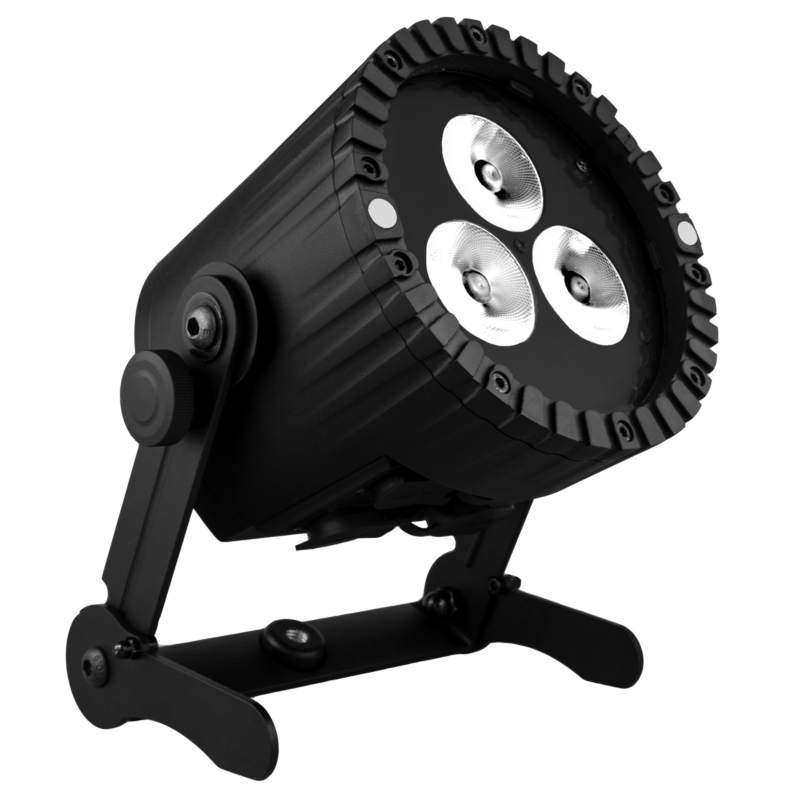Пожалуйста, примите к сведению, что из-за дефицита компонентов нам пришлось внести изменения во внутреннюю конструкцию AX5 TriplePAR, а также других приборов, выпущенных после сентября 2022 года. Теперь все эти решения поддерживают функцию BTB (Bluetooth Bridge), вследствие этого был добавлен новый артикул – AX5-BTB.
Артикул | AX5 | AX5-BTB |
|---|---|---|
Светодиодный модуль | RGBAW | RGBAW |
Цвета | RGBAW | RGBAW |
Общая мощность светодиодов | 45 Вт | 45 Вт |
Световой выход при 3200K | 1 080 люмен | 1 080 люмен |
Световой выход при 5500K | 1 413 люмен | 1 413 люмен |
Освещенность при 3200 K на 2 м | 4 800 люкс | 4 800 люкс |
Освещенность при 5500 К на 2 м | 5 151 люкс | 5 151 люкс |
CRI (Ra)/ TLCI 3200- 6500 K* | ≤92 | ≤92 |
Угол раскрытия луча | 13° | 13° |
Угол поля | 26° | 26° |
Стробоскопические эффекты | 0 – 25 Гц | 0 – 25 Гц |
Количество пикселей | 1 | 1 |
Время работы от аккумулятора | до 20 часов | до 20 часов |
Ресурс аккумулятора | 70 % после 300 циклов | 70 % после 300 циклов |
Время зарядки (номинал) | 5 часов | 5 часов |
Вход переменного тока | 90-264 В переменного тока; 47/63 Гц ~ 1,0 A / 230 ВТ | 90-264 В переменного тока; 47/63 Гц ~ 1,0 A / 230 ВТ |
Разъем питания переменного тока | PowerCON TRUE1 IN/OUT | PowerCON TRUE1 IN/OUT |
Проводной DMX | Да (via 5-pin XLR) | Да (via 5-pin XLR) |
CRMX-приемник | Встроенный | Встроенный |
BluetoothBridge BTB | Нет | Встроенный |
Беспроводные протоколы | CRMX, УВЧ | CRMX, УВЧ, Bluetooth, Wi-Fi |
Диапазон беспроводной связи | CRMX/УВЧ до 300 м | CRMX/УВЧ до 300 м Bluetooth до 3 м |
ИК-управление | Да | Да |
Степень защиты | IP65 | IP65 |
Рабочая температура окружающей среды | 0 – 40 °C / 32 – 104 °F | 0 – 40 °C / 32 – 104 °F |
Вес | 3,4 кг | 3,4 кг |
Размеры с лирой-подставкой (Д х Ш х Г) | 148.1 mm x 193.6 mm x 213.5 mm / 5.83" x 7.62" x 8.40" | 148.1 mm x 193.6 mm x 213.5 mm / 5.83" x 7.62" x 8.40" |
Размеры без лиры-подставки (Ø x H) | Ø 153.2 mm x 140.5 mm / Ø 6.03" x 5.53" | Ø 153.2 mm x 140.5 mm / Ø 6.03" x 5.53" |
Варианты монтажа | 4 x резьбовых отверстия M6, проушина для крепления страховочного троса, лира-подставка (с резьбовым отверстием 3/8"-16UNC / 1/2") | 4 x резьбовых отверстия M6, проушина для крепления страховочного троса, лира-подставка (с резьбовым отверстием 3/8"-16UNC / 1/2") |
Все приведенные характеристики являются типовыми и могут быть изменены без предварительного уведомления.
